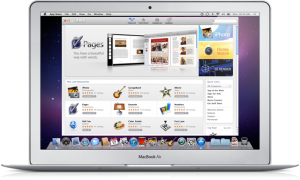That includes the messages they develop when communicating directly with customers and clients.
It’s rooted in good intentions.
But far too often, people fall short in delivering on what ought to be the underlying promise of good service: being useful and authentic.
“Have you found everything you’re looking for?” I’ll bet you’ve been asked that countless times at the checkout counter at a chain store. I hear that question so often now that I answer “yes” almost like an involuntary reflex…even in cases where, in fact, I haven’t found everything I was looking for.
I’ll bet you’ve done the same thing.
What’s worse is when you instead say “no” and it quickly becomes apparent that the person who cheerfully asked you that question in the first place hasn’t a clue what to do when someone indicates they actually have not found all that they were looking for.
Efforts at being useful stop being meaningful when they’re perceived as something that people have to do rather than want to do.
Too often, businesses get too caught up trying to turn good service into a process: a series of methodical steps that everyone is expected to follow on every transaction.
There are two problems with that approach. First, processes are designed to give you identical results every time. Sure, we all like to see consistent good service, but the real test of that kind of promise takes place when things aren’t working the way they should.
What do you do when that customer hasn’t found what they were looking for, or something in your transaction hasn’t gone the way that it should? Your next step there matters far more than adhering to any kind of process.
If all you have to rely on is a batch of template messages, your customers or clients will tune into this faster than you’ll ever anticipate.
They will become conditioned to ignore what you’re saying.
The second problem is that processes strip away the kind of sincerity that you ought to be building with your clients and customers.
People like to be made to feel special.
They like it when you notice things before you even have to ask. And they’re far more likely to respond in kind when you demonstrate with actions that service is something you work hard at providing, rather than just repeating something that you’ve been told to say.
There’s no substitute for being real.




